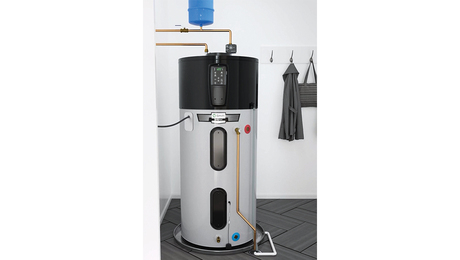*
see next post
Discussion Forum
Discussion Forum
Up Next
Video Shorts
Featured Story

Dehumidification is listed as a selling point for HPWHs, but are they actually effective at lowering humidity?
Featured Video
A Modern California Home Wrapped in Rockwool Insulation for Energy Efficiency and Fire ResistanceRelated Stories
-
 Podcast Episode 665: Rough Concrete, Good Workwear, and Framing a High-Performance House
Podcast Episode 665: Rough Concrete, Good Workwear, and Framing a High-Performance House -
 Podcast Episode 664: The Best of the Fine Homebuilding Podcast, Volume 8
Podcast Episode 664: The Best of the Fine Homebuilding Podcast, Volume 8 -
 FHB Podcast Segment: The Best of the Fine Homebuilding Podcast, Volume 8
FHB Podcast Segment: The Best of the Fine Homebuilding Podcast, Volume 8 -
 Podcast Episode 663: Green Stains, Larsen Trusses, and Insulating Behind Stucco
Podcast Episode 663: Green Stains, Larsen Trusses, and Insulating Behind Stucco
Highlights
"I have learned so much thanks to the searchable articles on the FHB website. I can confidently say that I expect to be a life-long subscriber." - M.K.














Replies
*
I have 3000 plus sq. ft. of red oak flooring to finish. I plan to use all water based products. Stain will be dark, gloss polyurthane with a final satin coat. I want to use a filler prior to sanding - what should I use? How do I apply it over such a large area?
I would also like to do the job room by room. Any problems with filling, sanding, staining, finishing to the threshhold, letting it dry, then starting in the next room?
*Will.... New or old flooring ? Is the floor level (high/low spots) ? What's the filler for (nail holes or damaged spots) ?When I do a floor if it has some high/low spots I sometimes start diagonally , but it depends on the floor. Also I assume you'll be using a drum type sander. If so have you ever used one before ? With a course or even med. paper if you are not acustomed to the sander you can do permanent damage to a floor in just a few seconds. As far as doing separate rooms I usually don't. Not saying can't be done, but as a rule I do all the sanding ,staining, & finishing in order.If you can give more info I try answer . Or I'm sure some of the other guys who post will have more info. Good Luck! Bill D. QWC
*will you are a lucky man the new FHB should answer all or most of your questions.
*If your're using all water based products and your installation is good you want to go with a water based filler, for nail holes and small gaps, AFTER you sand to 80 grit. Vacuum the floor,apply filler, let dry completly, and then sand to your final 100 grit. By sanding some first you level the floor, fill some small gaps and holes with oak dust and have a smooth surface to trowel to(no bumps and ridges that prevent the fill from filling). You might also consider putting down your sanding sealer before you apply the stain. It doesn't allow the wood to soak up to much stain if you can't time wiping off the excess consistently across all 3000 sq.ft.. The only drawback is that it might take two or three coats of stain to achieve the desired color. It is a good system if you've never stained a floor before. Use a very good water base poly with a hardener that you a dd as a catalyst per gallon. I use 'Street Shoe' by Basic Coatings. Check out their web site , it's good. The quality of the poly is crucial. Good luck.